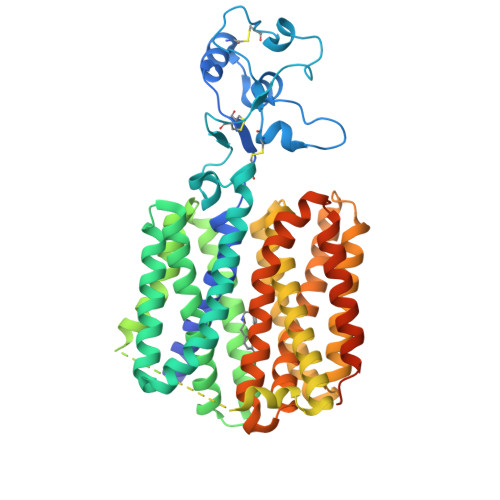Structural basis of promiscuous substrate transport by Organic Cation Transporter 1.
Zeng, Y.C., Sobti, M., Quinn, A., Smith, N.J., Brown, S.H.J., Vandenberg, J.I., Ryan, R.M., O'Mara, M.L., Stewart, A.G.(2023) Nat Commun 14: 6374-6374
- PubMed: 37821493
- DOI: https://doi.org/10.1038/s41467-023-42086-9
- Primary Citation of Related Structures:
8SC1, 8SC2, 8SC3, 8SC4, 8SC6 - PubMed Abstract:
Organic Cation Transporter 1 (OCT1) plays a crucial role in hepatic metabolism by mediating the uptake of a range of metabolites and drugs. Genetic variations can alter the efficacy and safety of compounds transported by OCT1, such as those used for cardiovascular, oncological, and psychological indications. Despite its importance in drug pharmacokinetics, the substrate selectivity and underlying structural mechanisms of OCT1 remain poorly understood. Here, we present cryo-EM structures of full-length human OCT1 in the inward-open conformation, both ligand-free and drug-bound, indicating the basis for its broad substrate recognition. Comparison of our structures with those of outward-open OCTs provides molecular insight into the alternating access mechanism of OCTs. We observe that hydrophobic gates stabilize the inward-facing conformation, whereas charge neutralization in the binding pocket facilitates the release of cationic substrates. These findings provide a framework for understanding the structural basis of the promiscuity of drug binding and substrate translocation in OCT1.
Organizational Affiliation:
Molecular, Structural and Computational Biology Division, The Victor Chang Cardiac Research Institute, Darlinghurst, NSW, Australia. y.zeng@victorchang.edu.au.



















